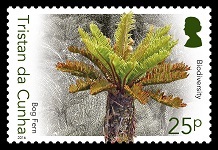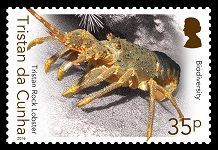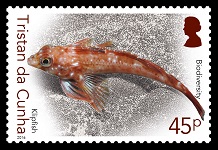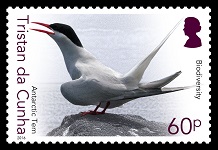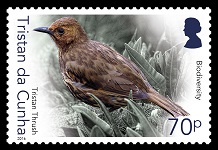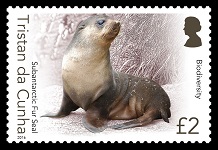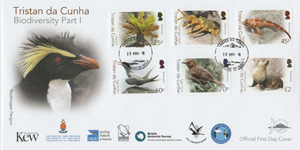Biodiversity Part I
| Issue date: 30th November 2016 | ||||||||||||||||||
|
||||||||||||||||||
|
Like most oceanic islands, the Tristan archipelago supports fewer species compared to a continental landmass of similar size, but many of the species found there are unique to Tristan. The islands are perhaps best known for their rich birdlife. All seven landbirds are endemic to the islands, and include the world's smallest flightless bird, the Inaccessible rail. Seabirds dominate the vertebrate fauna; about 8 million pairs of seabirds, mostly burrow-nesting petrels, breed on the islands, including four species that only breed on Tristan's archipelago: the Tristan albatross, Atlantic yellow-nosed albatross, spectacled petrel and Atlantic petrel. Terrestrial plant diversity is modest, but 27 of 58 native flowering plants are found nowhere else, as are 14 of the 35 ferns. Less is known about the native invertebrates, but there are many unique species, including flightless moths, crane flies and fruit flies, as well as fascinating radiations of snails and weevils. Unfortunately, oceanic island ecosystems are particularly susceptible to invasions by introduced species. Tristan is lucky to have some of the least transformed temperate islands, but is still home to the greatest number of globally threatened terrestrial species of all the UK Overseas Territories. This stamp series celebrates the islands' extraordinary biodiversity. In part I the following have been depicted: 25p - Bog Fern - Blechnum palmiformeThe Bog Fern is a large, distinctive, cycad-like fern, with stems up to 1.6m tall and 30cm in diameter, sometimes with short side branches. It occurs on all the islands, including Gough, from sea level up to about 800m on Tristan. They are particularly attractive in spring, when the new golden fronds emerge. 35p - Tristan Rock Lobster - Jasus tristani (Crayfish)Of the few species of large crustaceans that occur at the Tristan islands the rock lobster is extremely abundant. They occur from intertidal pools to more than 200m deep. Endemic to the Tristan islands, Gough and Vema Seamount, they support an important fishery that is the mainstay of Tristan's economy. 45p - Klipfish - Bovichtus diacanthus (Black devil)Klipfish are unscaled, bull-headed fish that reach a maximum length of 25cm. They occur in rock-pools and shallow sub-tidal areas. Most are olive or blackish-green above, but can vary from reddish-brown to blackish to match their habitat. They are endemic to the Tristan island group and Gough. 60p - Antarctic Tern - Sterna vittata tristanensis (Kingbird)The Antarctic tern is known locally as the kingbird because despite its diminutive stature it fiercely defends its nest and chicks against all other birds. It breeds throughout the Antarctic, reaching its northern limits at Tristan, where it is represented by an endemic subspecies. 70p - Tristan Thrush - Nesocichla eremita (Starchy)The starchy or Tristan thrush is confined to the three northern islands, and is the only landbird that survived colonisation by people on the main island of Tristan. It eats a wide range of prey, from berries and insects to eggs and chicks. They even hunt and kill adult storm petrels. £2 - Sub-Antarctic Fur Seal - Arctocephalus tropicalisHunted to the brink of extinction in the 19th century, sub-Antarctic fur seals found refuge on the rugged, wave-swept boulder beaches along Gough Island's western coast. Since sealing ceased, they have recovered throughout much of their former range, but Gough with some 300,000 animals remains the world stronghold for the species. |
||||||||||||||||||
|
Technical Specifications from Pobjoy Mint Ltd. |
||||||||||||||||||

